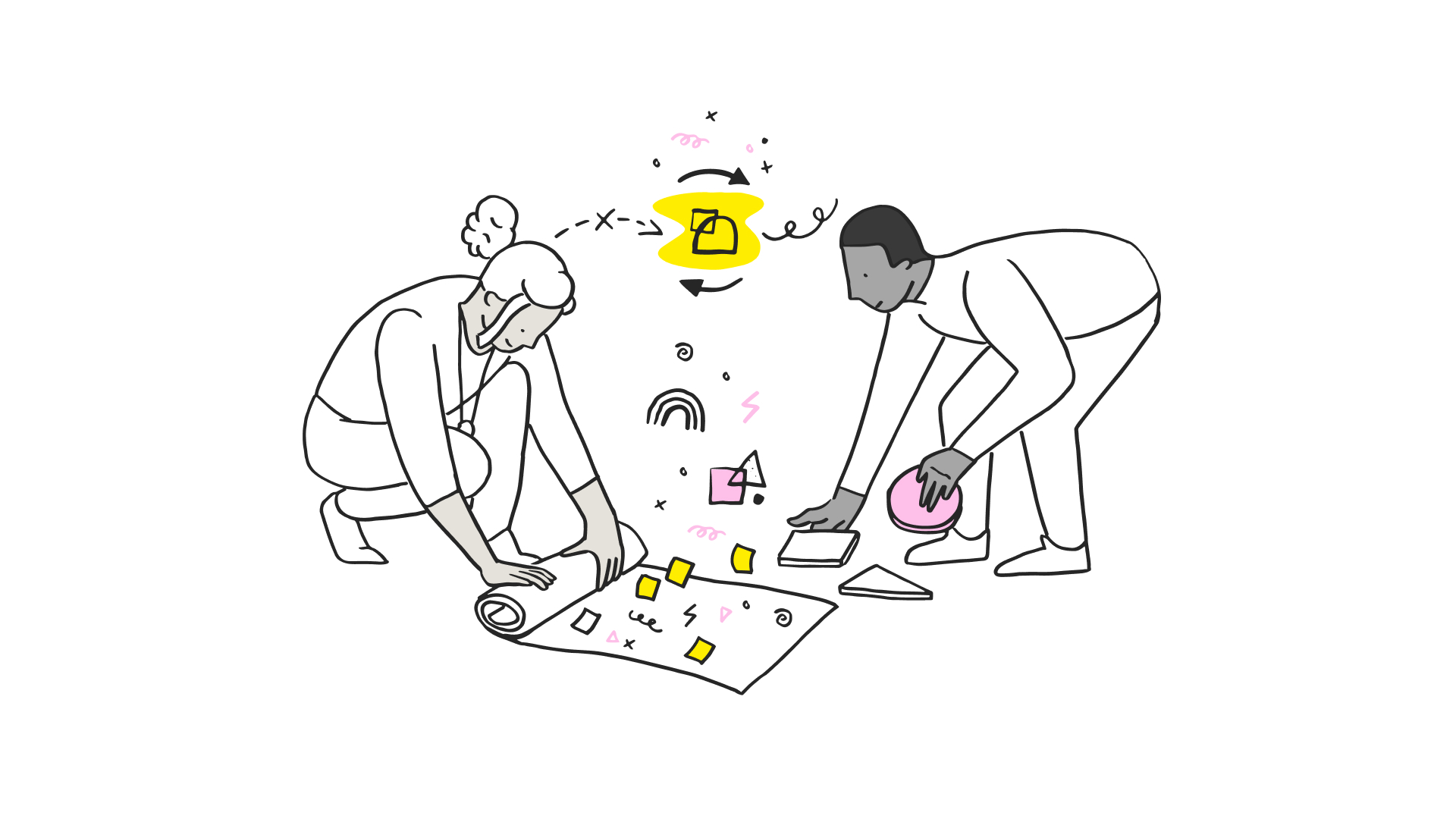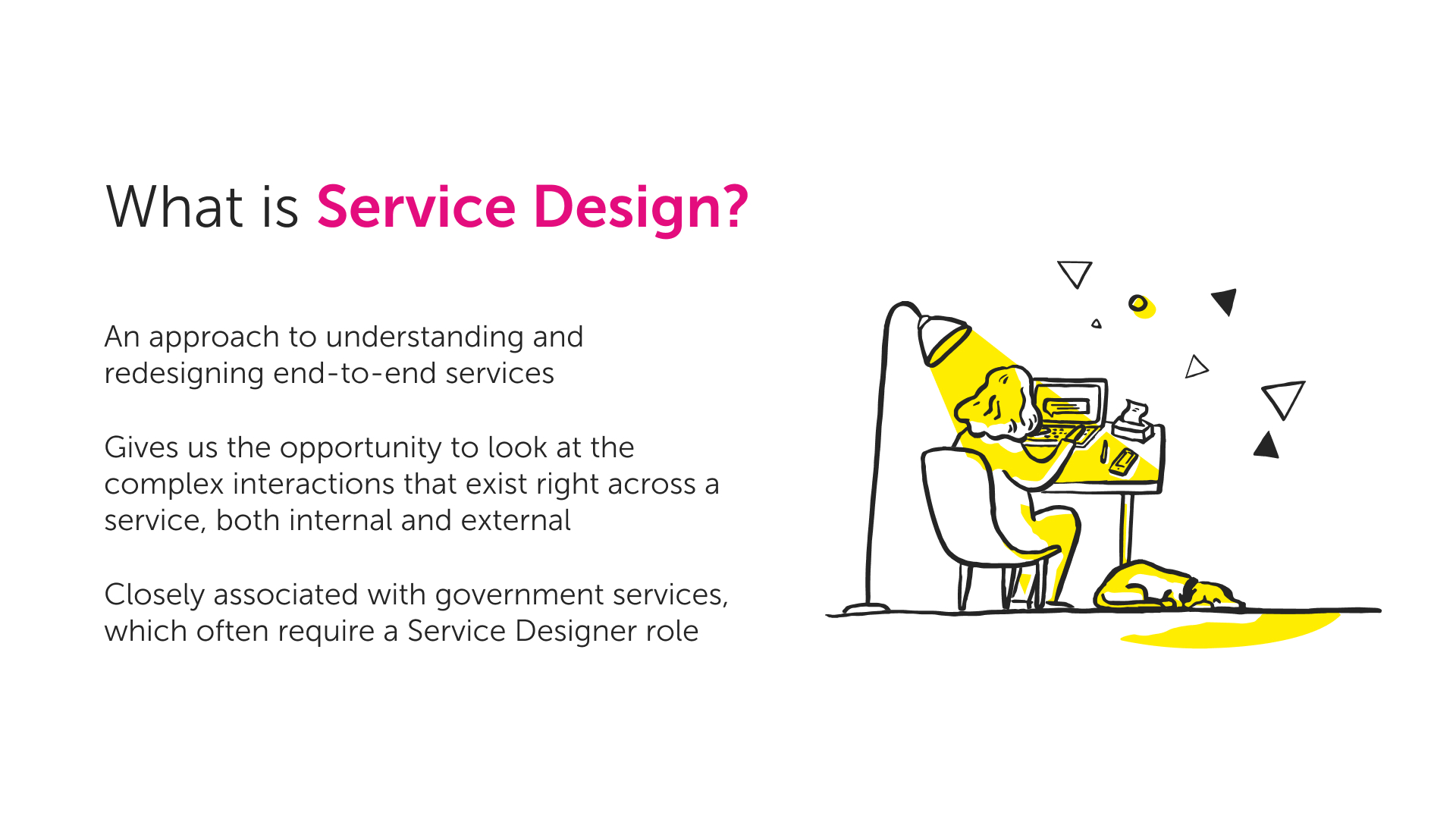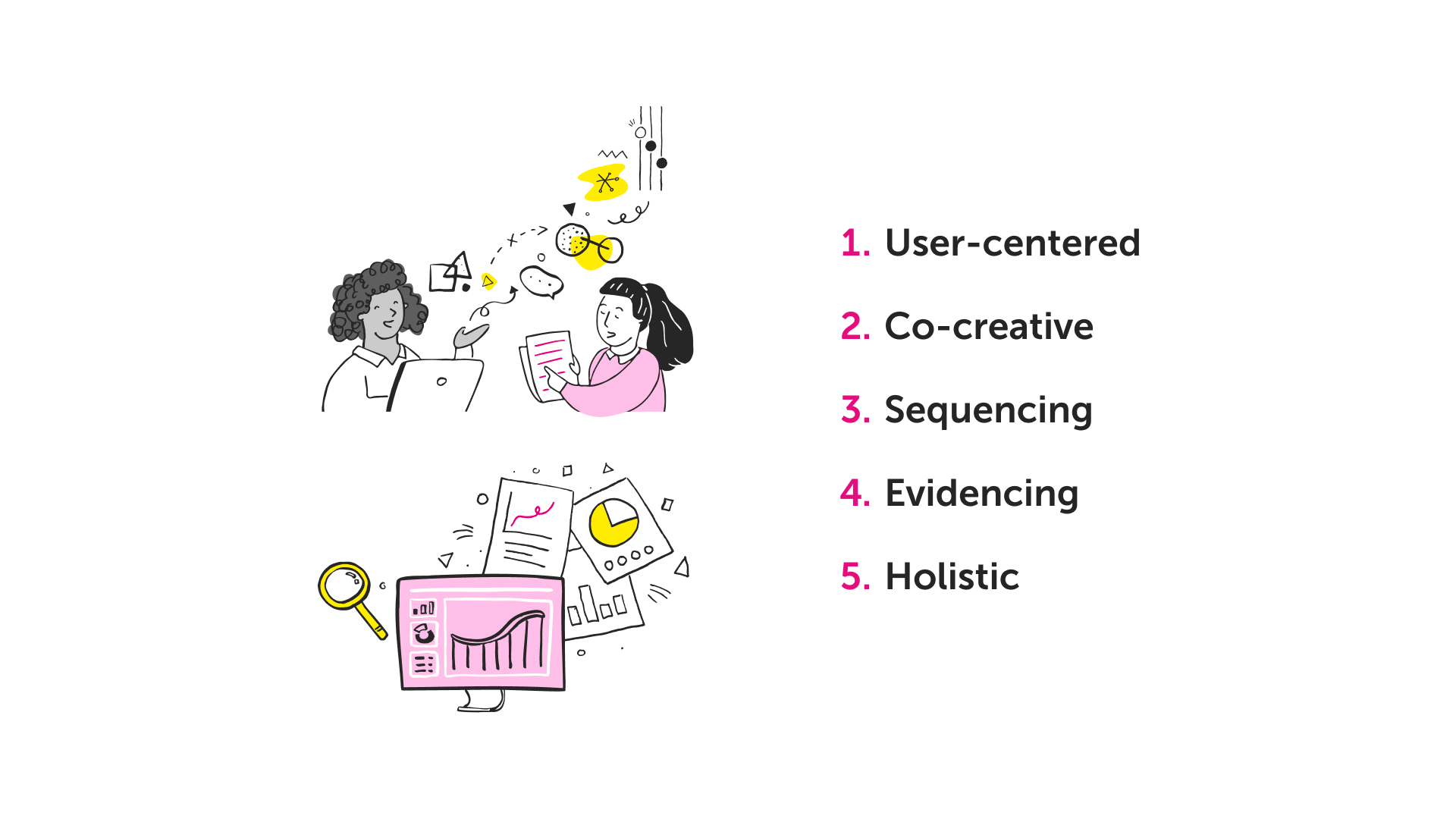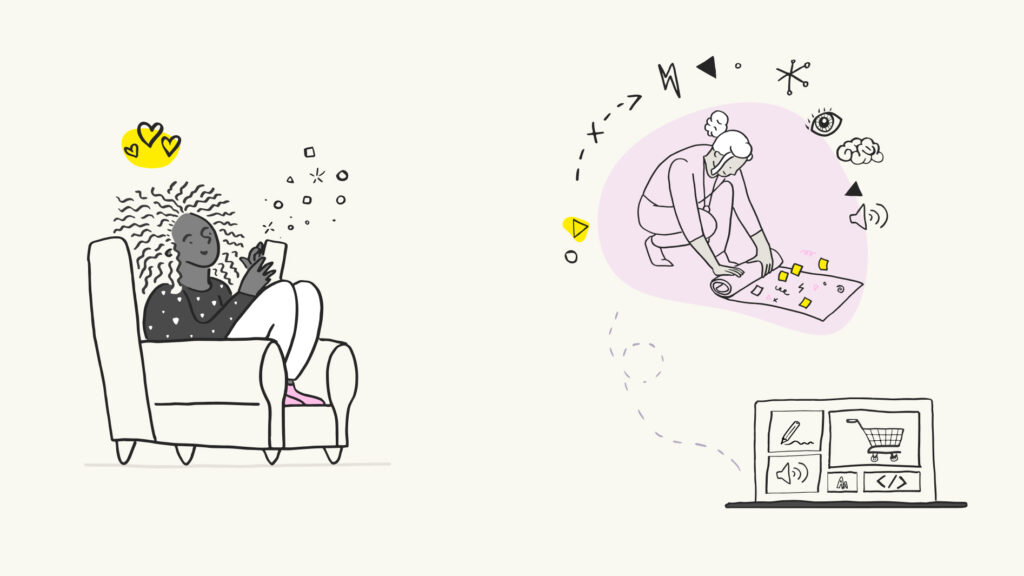
Service design is an approach to understanding and redesigning end-to-end services. It considers the needs of those interacting with and using the service (often called the frontstage), as well as associated employees and processes that help that service run (the backstage). This holistic lens enables us to improve that service to better meet user and organisational goals.
It’s higher level. Service design gives us the opportunity to look at the complex interactions that exist right across a service, both internal and external. Booking a doctors appointment, for example, could easily be considered in discreet parts: the phone system, the checking in system, the system that records notes. In service design we would look at the end to end process, starting with the phone call, thinking about the journey to the surgery, the parking, the interactions at reception and the workloads and pressures of the receptionist, the doctor’s room etc.
Service design is closely associated with government services, which often require a Service Designer role as part of their agile team make up. However, as you’d expect, service design has applications beyond the public sector, and is relevant to any kind of service you can imagine.

For instance, we are seeing service design become integral to digital transformation, which is where a number of organisations find themselves. It’s pertinent because it deals with all the processes that deliver the experience, rather than just the end point. So if your organisation is making that transition and wants to be more design-led, service design is a good thing to know about and invest in.
The role of service design in our recent work with NHS Digital was core to rapid digital transformation – spinning up a coronavirus response and testing services from scratch in a matter of weeks. Taking into account public needs and mapping those against policy demands and NHS delivery processes and mechanisms. As a result, we helped to get tests to those most in need, and increased public understanding of government policies.
Likewise, in transforming the volunteer experience for Girlguiding, a service design approach enabled a clearer understanding of both digital and non-digital service touch points and how they interacted. Coupled with depth stakeholder research into organisational process, goals and barriers, service design played a big role in improving volunteers experience and the organisations ability to deliver inclusivity across its service.
How it aligns to UX
Traditionally, user experience design included the full end to end experience. But what we’ve seen in recent years is the narrowing of the definition of UX to cover only digital aspects of the journey. Because digital services right now tend to exist through screens (already things like voice and AR will disrupt this way of thinking), we get the conflation of UI and UX design.
It wasn’t always this way. But even with a broader remit within UX, taking into account offline as well as online aspects to a service, UX didn’t do as much in the backstage processes part of services that service design now does.
The key is the shift in emphasis. In UX, as you would expect, the user is the heart of everything we are looking to do; often this is the end user of the service. In service design, we put the service at the heart of everything. This naturally includes end users, but will also include aspects of the service unseen or untouched by the end user. Contact centre staff, for example.
The toolkit for service designers is broad
Service design can cover a broad range of people and processes, and as a result the toolkit for a service designer is broad. While in government settings a service designer may be working within a multidisciplinary team, including researchers, content designers, and interaction designers, someone in the private sector is more likely to have a more generic job title, such as ‘UX designer,’ or ‘UX architect.’ In this case, they may be fulfilling multiple roles, crucially that of the user researcher. In which case, you can expect a service designer to use a number of methods (link to services page) in order to map the service out (called a service blueprint), and start to redesign the service.
Primarily, in service design we’re going to be thinking about the following:
1. Actors (e.g., employees delivering the service)
2. Location (e.g., a virtual environment where customers receive the service)
3. Props (e.g., objects used during service delivery)
4. Associates (other organisations involved in providing the service – e.g., logistics)
5. Processes (e.g., workflows used to deliver the service)
And we might use journey maps, personas, and blueprints in order to document some or all of the service. We might also be documenting as-is and to-be process maps, and using storyboards to tell the story of the service.
Key principles of service design
Similar to how there are principles that help guide UX designers, in This is Service Design Thinking, Stickdoen and Schneider identify five key principles for service design that hold weight regardless of which service you are looking at:
1. User-centred – Use qualitative research to gather all user needs.
2. Co-creative – Include all relevant stakeholders in the design process.
3. Sequencing – Break a complex service into separate processes and user journey sections.
4. Evidencing – Envision service experiences to make them tangible for users to understand and trust brands.
5. Holistic – Design for all touchpoints throughout experiences, across networks of users and interactions.
When written like this, it becomes clearer that this isn’t a topic solely related to the public sector. And this is why service design is getting increasing attention and becoming increasingly important. Given how most organisations are shaped around the delivery of services in some way (even if that service is the presentation and delivery of a physical product), can you afford to not ignore service design?
The temptation will always be to remain in siloes, using tactical UX projects to improve discreet parts of a service; however, in order to support a more strategic approach to UX (link to strategy blogs), service design encompasses more, and considers things in a holistic way – just as your customers and staff do.
If you’re interested in finding out more about service design, have a look at our service design services or contact us to discuss further.

Selected bibliography
- Publication: Lou Downe, Good Services, How to Design Services That Work
- Publication: Stickdorn and Schneider, This is Service Design Thinking
- From interaction design.org: Service design is a process where designers create sustainable solutions and optimal experiences for both customers in unique contexts and any service providers involved
- Nielsen Norman Group: Service design improves the experiences of both the user and employee by designing, aligning, and optimizing an organization’s operations to better support customer journeys
We drive commercial value for our clients by creating experiences that engage and delight the people they touch.
Email us:
hello@nomensa.com
Call us:
+44 (0) 117 929 7333

